That banging in your head that makes you feel like some part of the head is ready to explode is called headache. It is a pain experienced in any region of the head and can extend to the neck and or scalp. Sometimes, it is said to be the body’s response to physical or emotional stress.
Causes Of Headache
Various headache types are caused by different things:
Tension Headache which is the most common type can be caused by stress, lack of sleep, depression, anxiety, head injury, dehydration or holding the head and neck in an abnormal position. It can also occur when the supportive tissue in your head is exposed to really cold air, such as, when the cold air from an air conditioner directly hits your forehead or neck.
Migraine (recurrent throbbing headache) can be caused by perfumes or strong odors, change in sleep patterns or in hormonal levels, caffeine withdrawal, physical stress, drinking alcohol, stress, anxiety and loud noises. Certain food items like baked foods, chocolate, dairy products, red wine, cheese, soy sauce, processed meat and MSG (Monosodium Glutamate), tyramine, caffeine, peanuts, etc. are also known to trigger migraine.
Cluster Headache can occur as a result of high altitudes, smoking, drinking alcohol, physical exertion, heat and bright light.
Sinus Headache can occur due to cold, flu or fever, infection in the sinus passages or allergies.
Home Remedies
- Essential Oils
A number of essential oils can help reduce the scourge of headache and even pacify the raging storm on your head. Some of these oils include: peppermint oil, lavender oil, basil oil, eucalyptus essential oil, lemon citrus oil, geranium oil, etc. You can utilize these oils in a variety of ways including massaging, inhalation and diffusion. For massaging, apply the oil safely on your temples and neck, and sleep well to get relief from the throbbing pain. To inhale, you can prepare a steam treatment by adding a couple of drops of the lavender essential oil to a small pot of boiling water. Inhale the steam in deep and slow breaths for 15 minutes. You can have a bath with geranium essential oil for quick relief from headache, stress and tension. Just add 8 to 10 drops of this essential oil to your bathwater and enjoy the soothing experience.
- Ginger Root
The ginger root in your kitchen can do more than you supposed. For relief from headache, mildly crush the ginger pieces and add them to simmering water. Then cover the water vessel with a lid and let the ginger steep for 30 minutes. After that, strain the decoction and drink while it’s hot. You can drink one to two cups a day. The first cup should give you instant relief from a migraine. Alternatively, you can grind the ginger to powder. Mix the ginger powder with water to make a paste. Apply this paste on your forehead and leave it for 15 to 20 minutes. You can also add ginger powder to hot water and inhale the vapor.
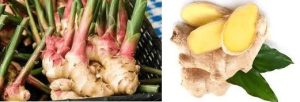
- Betel Leaves
The concoction of betel leaves have cooling, analgesic and anti-inflammatory properties. Camphor is a common component of pain-relieving ointments. It is an analgesic and is also extremely soothing for the mind. To prepare the concoction, gently grind the betel leaves with water and add camphor oil to this mixture. Apply the extract to your temples and forehead and leave it on for 10 to 15 minutes. You can also directly place the betel leaves on your temples.
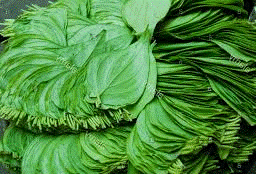
- Buckwheat
Buckwheat is rich in antioxidants and this enables it to work well against all types of headaches. These antioxidants are able to protect the cells of the body from the damage caused by a flavonoid called rutin – a phytochemical that is known to be the reason for migraines. Buckwheat is anti-inflammatory and analgesic in nature as well. It is generally advised to have buckwheat regularly to treat even the most stubborn migraines.
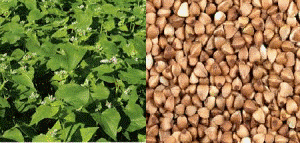
- Salt And Lemon
Salt and lemon can form a mixture to remedy headache. Himalayan pink salt also called rock salt is the most wholesome of all salts, and is extremely rich in minerals and electrolytes. It replenishes the electrolytes in the body and reduces the severity of the headache. Just squeeze the juice from lemon and add it to water. Then add the Himalayan salt, mix well and drink. You can also use only lemon. In that case, pound the lemon crusts and mix with water to make a paste. Apply this paste on the forehead and leave it on for 15 to 20 minutes. Again, you can cut a fresh lemon in half and rub it on your forehead and temples. Another alternative would be to squeeze the juice from half a lemon into your cup of herbal tea and drink.
- Feverfew
Some researchers have it that your head begins to pound as the blood vessels begin to expand and put pressure on the nerves. This potent herb is said to relax the tension in your blood vessels while also constricting them, thus easing the pain and reducing inflammation. All you need to do is to add the dried feverfew flowers to water and boil. Allow it to steep for 15 minutes. Then, strain and drink it while it is hot. Be wary of Feverfew’s tendency to cause canker sores, nausea and bloating. Discontinuing this drink can lead to insomnia, pain or even headache. Pregnant women, people taking blood thinning medications and those allergic to the dairy family should totally avoid using feverfew.
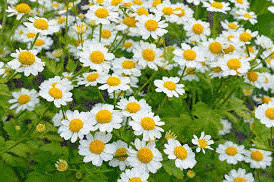
- Cloves
To use cloves for headache, you can opt for one of these three ways: Crush two to three cloves and transfer them to a clean handkerchief. Sniff the aroma of these crushed cloves whenever you feel a headache coming up. Or, mix two drops of clove oil and one tablespoon of carrier oil. Then massage your temple and forehead very gently with the mixture. Or, mix two teaspoons of coconut oil, one teaspoon of sea salt and two drops of clove oil and rub the mixture on your forehead.
- Ice Pack
The cold from ice helps reduce inflammation that contributes to headaches. It also has a numbing effect on the pain. Applying an ice pack to the back of your neck temple or forehead can give you relief from a headache. You can also place a washcloth dipped in ice-cold water over your head for about five minutes. Repeat the process several times. Alternatively, you can use a bag of frozen vegetables as a cold compress. Within half an hour, you will feel some relief. The application will try cooling the throbbing with cold effect.
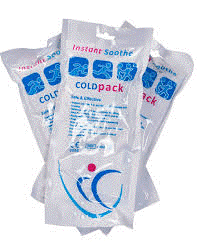
- Magnesium
Magnesium is one of the most successful headache remedies, first of all, because it’s much safer than taking a painkiller. Secondly, you don’t need to visit any pharmacy to get it. To increase your daily magnesium intake, eat more fiber. Magnesium is also contained in such diets as beans, whole grains, seeds, nuts and vegetables like broccoli, squash and leafy greens. Dairy products, meats, chocolate and coffee also contain decent levels of magnesium. Most cases of migraine headache have something to do with low magnesium level in the body. Pregnant women can use this therapy too although it may cause diarrhea when the level of magnesium taken is high.
- Stretching and Moving
Staying in one position for an extended period of time, like sitting at your desk and looking into the computer or book or television, can lead to body tension and cause headache. Even a prolonged time peering at your smartphone can cause some signs of headache. This position, with your head sticking out, puts extra 20 to 30 pounds of pressure on your neck! No wonder such a position leads to major tension headaches. An easy way to avoid this chain reaction is to take a break every 30 to 60 minutes. Stretch and move your head and neck around in a circular motion, gradually. This will relieve the built-up stress and can help towards avoiding headaches. Take a walk, trying to free your body and exercise your muscles too.
Just as some food items can cause headache, there are some others that can not only cure but also prevent headache. Regular consumption of these foods may reduce your chances of getting headache or reduce the throbbing when it comes. Baked potato, watermelon, yogurt, sesame seeds, spinach, bananas, mushrooms, salmon, cucumber, pineapples, apples, avocados, carrot, lettuce, warm cow milk, honey, etc. can prevent and remedy headache. Make food your medicine or medicine will become your food.
Bignedu
Note: Though the above is verifiable, it is only a general information and is neither a professional medical advice, diagnosis, treatment or care nor is it a substitute thereof. The piece does not cover all conditions or remedies associated with the illness. Make effort to consult with your physician or other qualified health personnel as necessary. Please see our Terms & Conditions at the footer area.










